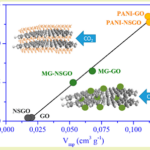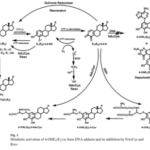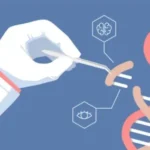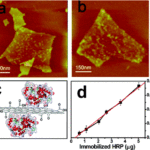October 16, 2024 Scientific alternative studies
Sadly, ignorance about chemotherapy is common and widespread.
Chemotherapy, the shocking truth : can increase a patient’s chance of survival by 3 to 5 percent

I believe it is time to return to the subject of chemotherapy, a very emotional subject for me, having seen with my own eyes the effects of the devastation that this type of medical treatment can cause.
In fact, my reflections on this subject are based on my sad personal experience and all I have learned from it since 1998.
Over the years, I have repeatedly demonstrated that it is definitely preferable to view all “traditional” medical prescriptions with a good dose of healthy skepticism.
Unfortunately, this is especially true in the case of cancer treatment.
Patients diagnosed with cancer immediately go into a state of shock when they receive this tragic news.
And it is in this state of shock that they must make a number of important decisions as quickly as possible.
One of the most important questions (which I know all too well) is the following :
“Will I have to have chemotherapy ?”
Chemotherapy can increase a patient’s chance of survival by 3 to 5 percent, but even this modest percentage is far too optimistic.
For example, the available information confidently suggests that chemotherapy allows breast cancer patients to increase survival by a little more than 2.5 percent.
Given that it can cause death and terrible damage to the immune system and healthy cells, it is really difficult to understand what the benefit of undergoing such treatment is.
I don’t think it’s an exaggeration to say that much of the hype surrounding chemotherapy has, over time, turned this medical treatment into a fraud, far more fraudulent than the “non-traditional” treatments, all of which are invariably dismissed by medical institutions as irrelevant or even harmful.

Almost certainly, hospital oncologists will recommend starting treatment as soon as possible.
Perhaps they will actually insist that the patient accept what they prescribe.
They may even appear contrite or dismissive, or imply that the patient is ignorant or, at best, fearful if he or she decides not to accept.
Oncology associations are almost always enthusiastic about chemotherapy.
However, they are also closely tied to the same pharmaceutical companies that profit from this very treatment, which in my opinion makes them part of the large and thriving “cancer industry”.
It is important to keep in mind that the sole purpose of the pharmaceutical companies is to make a profit, which is why they are willing to do whatever is necessary to pursue that goal.
They lie and cheat horribly, and above all, they have no interest in helping patients or saving lives.
It is good to remember this: the sole purpose of pharmaceutical companies is to make money, regardless of the relative human cost.
They are willing to hide potentially life-saving information if it will increase their profits.
In my opinion, the oncology associations have become completely corrupted by their alliance with the pharmaceutical companies.
Patients are never given much, if any, advice on how to reduce the risk of a possible cancer recurrence.
This means that (at least in “traditional” hospitals) either chemotherapy is given or nothing is done.
For example, it is rare for doctors to tell breast cancer patients to avoid dairy products, even if the arguments are extremely well-founded.
The only certainty is that it is extremely unlikely that a doctor will reveal the whole truth about chemotherapy.
Unfortunately, statistics are manipulated to increase sales and profits for pharmaceutical companies.
And deaths caused by chemotherapy are often misleadingly reported or underreported.
For example, if a patient receiving chemotherapy dies of a sudden heart attack, his or her death is likely to be recorded as a heart attack rather than as a result of cancer or chemotherapy.
Perhaps some might speculate that the death was due to the treatment, but certainly the drug will not be named and discredited.

In practice, this means that the survival statistics for chemotherapy are significantly worse than the available data and even worse than any positive effect that could be provided by a harmless placebo.
Furthermore, patients who undergo chemotherapy and survive for five years are considered cured.
Simply put, patients who die five and a half years after diagnosis are not considered cancer deaths.
And they are certainly not considered to have died from chemotherapy.
Academic research in 2016 looked at five-year survival rates and concluded that for 90 percent of patients (including the most common breast cancers), chemotherapy increased five-year survival by less than 2.5 percent.
Only a very small number of cancers (such as testicular cancer and Hodgkin’s disease) were effectively treated with chemotherapy.
In addition to this depressing survival rate, it should be remembered that it compromises the immune system (now, finally, considered crucial in the fight against cancer), damages all living cells, harms the intestines, can cause nausea and tinnitus, can cause neurological damage, can damage the bone marrow leading to the development of leukemia (it is puzzling that iatrogenic myeloid leukemia is in 10% of cases a consequence of chemotherapy), damages the heart and hearing, and, in a significant number of patients, quickly leads to the patient’s death.
It is true that it can reduce the size of a tumor, but in stage 4 cancer, chemotherapy appears to cause the disease to recur more quickly and more aggressively.
Cancer stem cells do not seem to be affected by chemotherapy drugs.
Nevertheless, the protocol for cancer treatment includes chemotherapy, and doctors are always reluctant to try anything else.
The Academy of Royal Medical Colleges, representing 24 Royal Colleges and a number of other leading health care bodies, reported that chemotherapy may do more harm than good when prescribed as palliative care for terminally ill cancer patients.
In particular, they concluded that chemotherapy drugs are unlikely to be effective.
Another report, from the Academy of Royal Medical Colleges, concluded that chemotherapy may even promote the spread of cancer cells in some circumstances.
In 2017, for example, it was reported that when breast cancer patients receive chemotherapy before surgery, the drug can cause malignant cells to spread to distant sites, resulting in metastatic cancer and taking the patient directly from stage 1 to stage 4.
Scientists analyzed tissue from 20 breast cancer patients who underwent 16 weeks of chemotherapy.
In most patients, the tissue around the tumor was more likely to metastasize.
In five patients, the risk was five times higher.
In none of the patients, however, did the tissue around the tumor become less prone to cancer cell spread and metastasis.
The problem, it seems, is that cancer cells have a great capacity to change, and chemotherapy designed to kill cancer cells can encourage the development of therapy-resistant cells that survive treatment and form a new tumor.
The only widely known side effect of chemotherapy is hair loss.
But that is really the least of the problems.
Chemotherapy kills both healthy and cancerous cells, and the severity of side effects depends on the age and health of the patient, as well as the type of drug used and the dosage prescribed.
In addition, while some side effects go away after treatment (as the good cells heal), there are others that may never go away.
Earlier I mentioned serious side effects, but as a reminder, here is a list of some of the problems that can be caused by chemotherapy drugs.
Bone marrow cells may be damaged, resulting in a lack of red blood cells and, in some cases, leukemia.
The central nervous system can be damaged, resulting in memory problems and an inability to concentrate or think clearly.
There may be problems with balance and coordination, and these effects may last for years.
In addition to brain damage, chemotherapy can cause pain and tingling in the hands and feet, numbness, weakness and aches.
Not surprisingly, depression is common.The digestive system is often affected by sores that form in the mouth and throat.
These can cause infections and make food taste unpleasant.
Nausea and vomiting can also occur.
Weight loss associated with chemotherapy may be due to loss of appetite.In addition to hair loss, skin may become irritated and nails may change color and appearance.
The kidneys and bladder can be irritated and damaged.
Swelling may occur in the ankles, feet, and hands.Osteoporosis is a common problem and increases the risk of fractures and injuries.
Women with breast cancer who undergo treatment to reduce estrogen levels are particularly at risk.Chemotherapy can cause hormonal changes that lead to many symptoms.
The heart can also be severely injured, and patients who already have heart problems can have them worsened by chemotherapy.
Finally, the problem with chemotherapy is that it can compromise the immune system.
Chemotherapy is known to affect DNA.
In addition, does chemotherapy change the nature of cancer cells ?
For example, it can change an estrogen-sensitive cancer cell into a triple-negative cell, which is much harder to treat.
And then there is the risk that chemotherapy can spread cells throughout the body.
Finally, there is growing evidence that chemotherapy can cause some patients to die more quickly.

Pharmaceutical companies, oncology associations and doctors recommend chemotherapy because they make money hand over fist.
Cancer associations, which in theory exist to protect people but in reality are ruthless profiteers at the expense of patients, are the least excusable.
Most doctors will not say it, and especially will not admit it, but in some hospitals cancer drugs go so far as to cause the death of 50 percent of patients.
A study by Public Health England and Cancer Research UK found that 2.4 percent of breast cancer patients die within a month of starting chemotherapy, and the figure rises to 8.4 percent for lung cancer.
In the latter case, the overall mortality rate for patients treated with chemotherapy is even higher than 50 percent.
When patients die so quickly and in such large numbers, I think we can safely assume that they were killed by the chemotherapy and not by the disease.
In the UK, the National Health Service publishes comprehensive guidelines on what to do in the event of a chemotherapy drug spill.
There are emergency procedures to follow if chemotherapy drugs are spilled on the floor.
And these drugs are put into people’s bodies.
So it is not surprising that many chemotherapy patients report that their quality of life has plummeted.
The usual oncological approach to cancer is to give chemotherapy and then wait to see if the cancer comes back.
If it does, more chemotherapy is prescribed.
The tragedy is that for many patients this does more harm than good.
It is disturbing to note that about a quarter of cancer patients die from heart attacks, often caused by deep vein thrombosis and emboli induced by the physical stress of chemotherapy.
However, such deaths are not included in official statistics, either for cancer or, just as importantly, for chemotherapy.
It is not an exaggeration to say that the establishment manipulates the figures to suit its own, largely commercial, purposes, extolling the virtues of the pharmaceutical companies’ products at every opportunity and never failing to cast doubt on any cures that might pose a threat to the giant cancer industry.
In essence, drugs presented in clinical trials, paid for by pharmaceutical companies and usually reviewed by physicians with ties to those same pharmaceutical companies, and then published in medical journals that receive substantial advertising funding from the pharmaceutical companies (still the same ones), are the only treatments accepted by the medical profession.
There is a lot of talk about “peer reviewed” studies, but this only means that one or two doctors with ties to the pharmaceutical companies reviewed and approved the paper.
The word “corrupt” does not even come close to describing this incestuous system.
Anyone who wants to go on chemotherapy has the right to do so.
I have no intention of discouraging anyone from using the various drugs that they believe will help them.
I am only interested in providing unbiased, independent information that can help patients make the right decision for themselves.
But all too often, unfortunately, patients seek treatment, understandably, because they want something done, and because they have been misled by advertisements for chemotherapy sponsored and paid for by pharmaceutical companies.
And doctors administer such treatment, even though a little research would make them realize that they may be doing more harm than good.
There are very few cancers that can be successfully treated with chemotherapy, but they are very few and are falsely and unsubstantiatedly touted as success stories by pharmaceutical companies and their representatives.
Every patient should make up his or her own mind by discussing with his or her doctor the evidence for and against in his or her situation.
And I believe that all patients should have the right to be informed about the basic knowledge they need to contribute to this evaluation process.
Unfortunately, however, ignorance about chemotherapy is unfortunately widespread and generalized.














